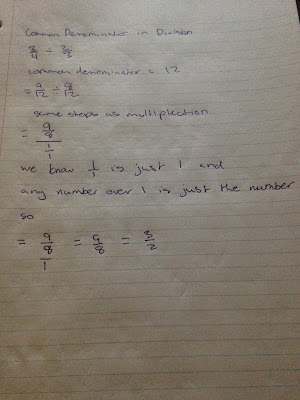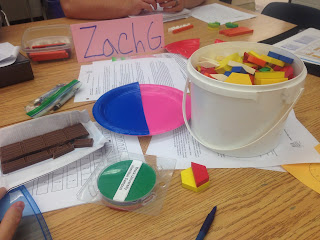First, I am really happy we spent a great deal of time on fractions. I feel as if they are some of the hardest problems in elementary math and finding a way to show the simply way to an answer of a difficult question really makes my job as a teacher easy and it makes sure I can benefit my students. Like I have said before differentiated learning is something that needs to be understood by the teacher, there are many different students who learn a different way than you do and it is your job as the teacher to explore all ways to present and solve a problem. After all, you want your students to succeed, but also understand the problem.
I really enjoyed the mini conference activity. Not only did we get to share our ideas from the "Kitty Cat Problem" but we also had examples from other students in a previous session or class. Since our group solved the problem one way we were able to pair with another group in a "conference" and see the way they solved the problem. This helped us understand how other people see the problem, and when they explain their thought process we are able to see another a solution to the same answer. We went around to look at some other examples of the same question solved a completely different way. It was actually amazing how many different ways were expressed. One way which I will post below was actually so simple and so smart that I completely overlooked that way when completing the question myself. It goes to show when you are tough a certain way, you tend to avoid other ways of doing a question which I myself am really working on in order to show my students all possible solutions.
Below are the solutions that my group did and another groups solution done a completely different way. The point of the question was to find which store sold cat food a cheaper price.






